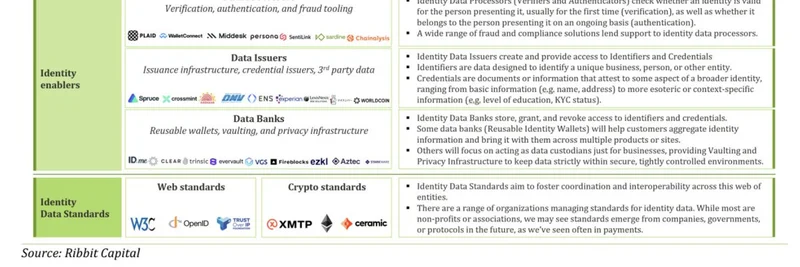In the fast-evolving world of crypto and fintech, where meme tokens often steal the spotlight, a recent tweet from @Altcoinist_com has sparked buzz by linking Ribbit Capital's strategic vision directly to the $TIBBIR token. The post dubs the "Ribbit Identity Letter 2024" as the unofficial whitepaper for $TIBBIR, highlighting how this venture capital firm is executing on a bold plan to redefine identity in the digital age. If you're into meme coins with real utility backing, this is a thread worth unpacking.
The Tweet That Connected the Dots
The tweet quotes a thoughtful post from @ribbita2012, emphasizing how infrastructure in today's economy has shifted from physical assets like bridges to programmable elements like identity layers and token factories. These tools make business operations more efficient by turning complex data into something machines can easily process and audit in real time.
Building on that, @Altcoinist_com points out that Ribbit Capital is actively implementing the strategies from their 2024 Identity Letter. Evidence? Investments in companies like @crossmint and @ton_blockchain came after the letter's release. Layer in recent tweets from @ribbita2012, and it becomes clear: $TIBBIR isn't just another frog-themed meme—it's tied to a collaborative effort involving over 30 Ribbit portfolio companies. The "secret sauce" remains under wraps until $TIBBIR exits stealth mode, but the hints suggest a massive infrastructure play focused on identity.
Breaking Down Ribbit's Identity Framework
At the heart of this is Ribbit Capital's Identity Framework, detailed in their investor letter. Think of it as a roadmap for modernizing how we handle digital identities—essentially, the data that proves who you are online, from your bank account to your social profiles. In simple terms, identity is the backbone of finance: it verifies transactions, prevents fraud, and builds trust. But current systems are outdated, leading to headaches like repeated KYC (Know Your Customer) checks or fraud alerts that slow everything down.
Ribbit breaks this down into key layers:
Application Layer: This is where everyday apps live, from financial ones like Nu Bank or Chime to social platforms like TikTok, Telegram, and WeChat, plus tech giants like Microsoft, Apple, and Google. These collect vast amounts of user data but often require access to deeper context for seamless experiences. AI agents, for instance, will need this data to function effectively.
Identity Enablers: The middle tier includes:
- Data Processors: Tools for verification, authentication, and fraud detection, such as Plaid for banking connections, WalletConnect for crypto wallets, or Persona for identity checks.
- Data Issuers: Infrastructure for creating unique identifiers or credentials, like Spruce for decentralized IDs, Crossmint for NFT minting, or Worldcoin for biometric-based identities.
- Data Banks: Secure storage solutions like reusable wallets (e.g., ID.me or Clear) that let users aggregate and control their identity data across services, or privacy-focused vaults like Evervault or Fireblocks.
Identity Data Standards: At the base, standards ensure everything works together. Web standards from W3C, OpenID, and Trust Over IP sit alongside crypto ones like XMTP for messaging, Ethereum for smart contracts, and Ceramic for data storage. The goal? Interoperability, so your identity isn't siloed but can move securely across platforms.
Ribbit argues that digital banks are perfectly positioned to lead here—they already handle KYC at scale and could monetize it by issuing reusable identities. This turns a cost center into revenue, much like credit card networks do today.
The letter also touches on "Identity in 2023," noting how modernizing this space has been a pain point for companies Ribbit backs. With advancements in biometrics, zero-knowledge proofs (a way to prove something without revealing details), and AI, the timing is right for a breakthrough.
How $TIBBIR Fits Into the Picture
$TIBBIR, or Ribbita by Virtuals, is a stealth-launched meme token on the Base blockchain (contract address: 0xA4A2E2ca3fBfE21aed83471D28b6f65A233C6e00). With a market cap hovering around $170-180 million as of late August 2025, it's not just hype—it's positioned as Ribbit's bet on identity infrastructure. Descriptions from sources like CoinGecko and CoinMarketCap frame it as integrating AI with DeFi to boost efficiency and security.
The tweet suggests $TIBBIR embodies the framework's vision: a "digital backpack" for carrying your identity across the crypto world. By leveraging Ribbit's portfolio—companies like Persona (recently valued at $2 billion after a funding round co-led by Ribbit) and ID.me—this token could enable real-world applications, from seamless onboarding to fraud-proof transactions. It's like turning the identity letter into actionable tech, where meme culture meets serious fintech innovation.
Why This Matters for Meme Token Enthusiasts
For blockchain practitioners, this is a reminder that not all memes are jokes. $TIBBIR could represent the fusion of fintech and crypto that Ribbit envisions, where identity layers make DeFi more accessible and secure. If Ribbit's thesis holds, we're looking at a shift where data flows as freely as money, audited in real time without compromising privacy.
Keep an eye on updates from Ribbit Capital via their website or $TIBBIR's progress on platforms like DexScreener. As the token exits stealth, we might see how those 30+ companies collaborate to build this infrastructure. In the meantime, this tweet serves as a teaser for what's next in the meme token space—where frogs leap into the future of finance.


